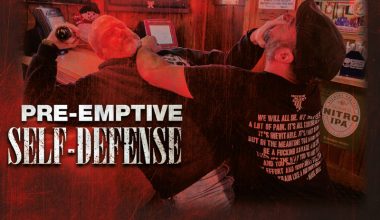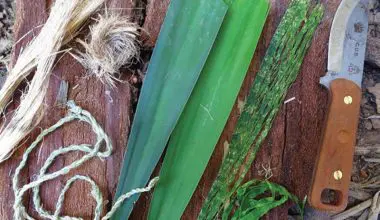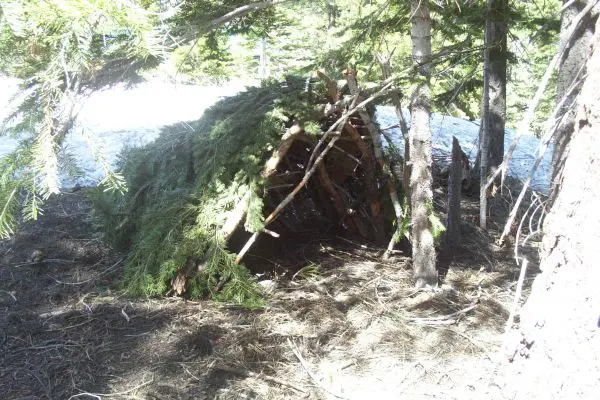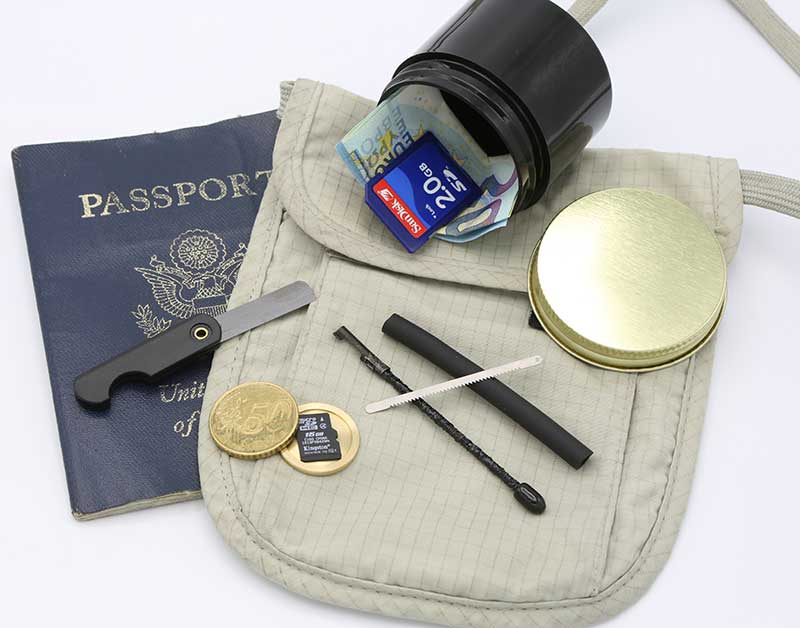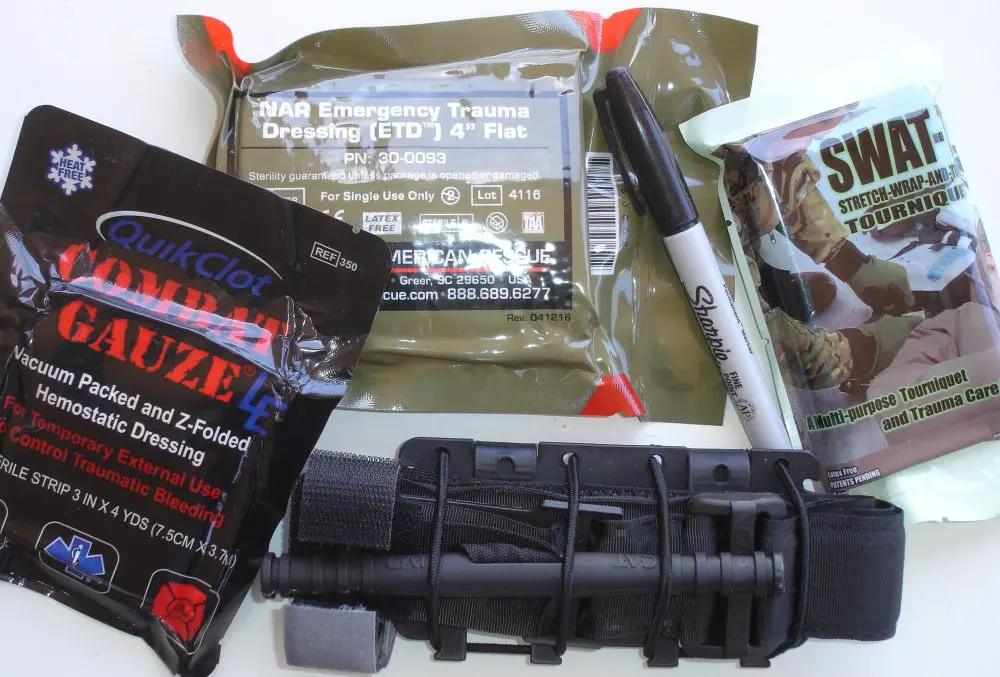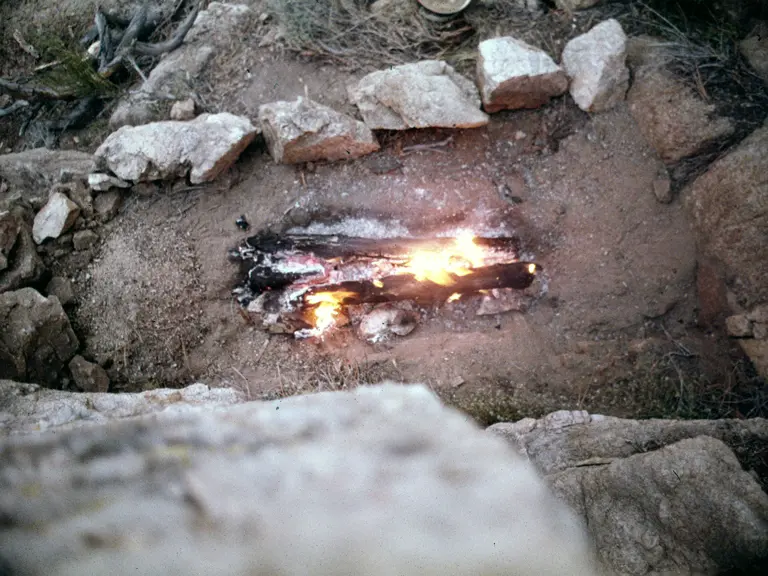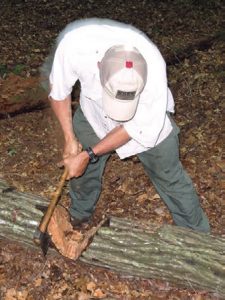
You’re lost! Darkness is setting in as you rush to make a shelter with a hatchet … and you cut yourself. Now you’re bleeding, which adds another dimension to your already dire condition!
An emergency or survival situation is bad enough, but adding an injury to the mix can be life threatening. It doesn’t matter if you’re deep in the bush or at your local campground; a bad cut is usually trip ending. But what if you’re alone or far from primary care?
Preparation and safety for making wilderness shelters, cutting wood for campfires, or doing any type of camp crafts start before your trip, in the form of knowledge and practice.
Survival tools, in my opinion, are tools avid outdoorsmen carry for hikes, Bug Out Bags, camping gear, and survival kits. Knives, saws, hatchets, tomahawks, and axes are the usual suspects. Each has its own degree of danger, coinciding with the degree of injury that can be inflicted should an accident occur.
Table of Contents
SAWS
Saws available for outdoor travel and use around the homestead are all handy, energy-efficient ways of cutting wood and pruning branches. Large and small projects can be accomplished or embellished using a saw, with a greater degree of safety than other survival cutting tools.
Most survival books have a section on cutting tools, but few include safety tips. I feel safety with cutting tools should start with wearing leather gloves, especially for gathering wood (branches and logs), which may have thorns, splinters, coarse bark, and sharp pieces protruding. Most dry branches can be broken with your own gloved hands and booted feet. If they are truly dry and fit for the fire, they crack easily.
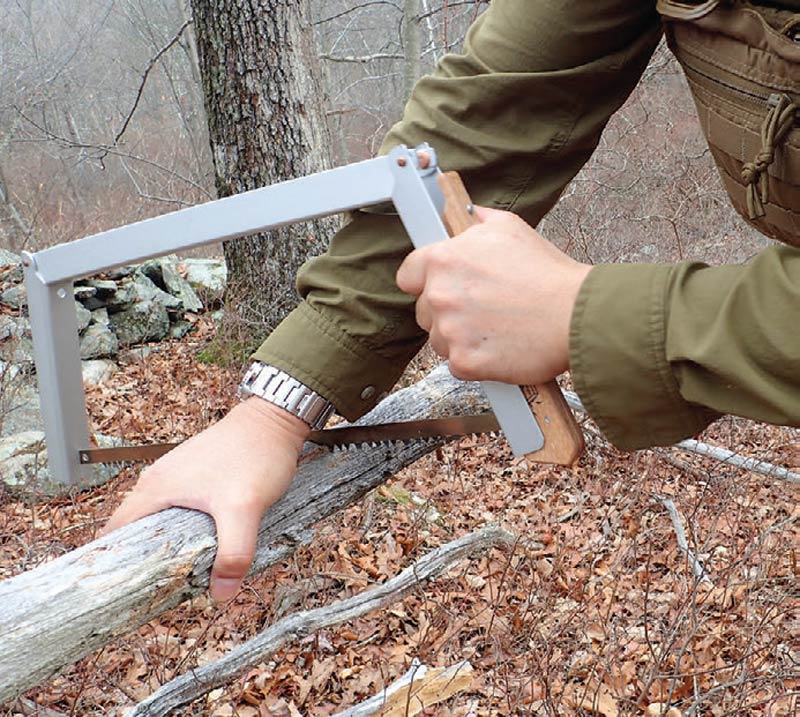
But hardwood and thicker branches require sectioning, and this is where a saw shines. A saw can easily reach into odd spaces that would require more room for a chopping tool like a machete or axe. Often, when sectioning branches or a tree, it is very hard to move until some pieces are cleared. A bucksaw or bowsaw (frame saw) is excellent for sectioning larger wood, but it may struggle to get into places at first. Folding saws can zip through branches with great authority, but safety must be observed.
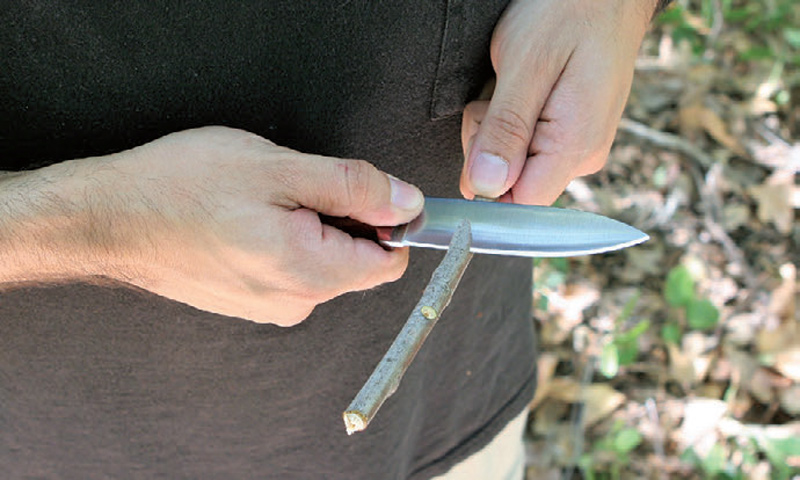
Just grabbing a branch or small log and sawing close to your hand seems natural, but is the easiest way to cut your thumb and the top of your hand. Use branches as buffers or safety blocks when cutting. On long, straight sections with no nodes or offshoot branches to protect your hand, reach over the saw with your free hand and grip the wood so the saw can’t skip out onto your hand. It may feel awkward at first, but after a few times, it will feel natural, and it is the safest way to use any saw. Using a stump, support log, or rock helps the cut naturally break and saves the user from exerting too much energy that may result in a slip and injury.
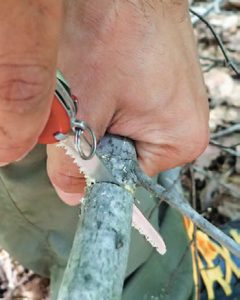
Never cut branches above your head out of reach, as it may result in eye, face, or head trauma. Another way to safely cut wood with a saw is gripping the log with your free hand where you want the cut, but holding a small stick in it, so it protrudes a couple of inches beyond your thumb. It will act as a buffer if the saw skips out.
KNIVES
The knife is arguably the most valuable cutting tool in survival. Safety rules: First, always cut away from yourself and others. Never use your leg or any body part as the support or cutting board. Safety lies within the correct techniques.
The forehand grip is by far the most common way of holding a knife. Hold the knife in a firm fist-type grip with the edge facing away from you. Whittling a point on the end of a stick and cutting heavy materials are also done with this method.
Be sure to keep your arm flexed and use your whole body in a slow, smooth motion while applying constant pressure for making fuzz sticks nice and even.
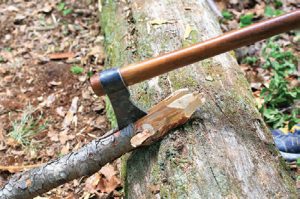
The chest-lever grip, where the knife edge is actually facing in the same direction as the knuckles of the hand, is also a safe, efficient grip. The thumb rests on the flat of the blade for support. Bend the elbow and position the hand (with the knife) across the chest with the spine facing the chest, edge facing out. Bring the work hand up to meet the cutting edge. The cut is accomplished by using your shoulders and back muscles with a chestout motion, pulling your bent arms away from each other. This makes for a powerful cut.
The advantage of this kind of position is that you can have the knife at chest level right under your eyes for controlled cuts. Most of all, it is a very safe grip because the knife is not flailing around when you follow through.
CHOPPING TOOLS
There are no minor injuries when it comes to the axe or any chopping tools. Chopping requires a lot of energy as compared to a saw, and therefore more danger exists. An axe, hatchet, tomahawk, and machete can be “standalone tools,” but excel at splitting and hacking. The impact of such tools can be devastating to a limb or any body part. Be aware of the follow through and direction of the cutting edge at all times.
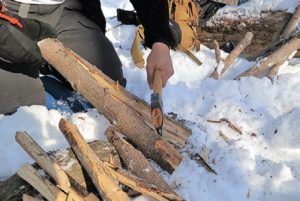
Hatchets are dangerous due to the short handle, which can often injure a knee or shin on the follow through or glancing blow, same as a machete. The longer handles of a half- or full-axe and some tomahawks are safer in that the cutting bit is more likely to dig into the ground rather than come back toward you.
As with a saw, never cut above your head, and keep work as close to the ground as you can. With a hatchet or short-handled tomahawk, it is always safer to kneel down, with the work in front of you. Sunglasses or safety glasses keep your eyes safe from the sharp chips that will undoubtedly be airborne when chopping. Always keep a safe, parallel plane to the ground or wooden stump when splitting or chopping.
Don’t use heavy cutting tools after dark, if at all possible.
Safety with any type of axe or knife starts by having a reliable sheath for carry and transport. Knowing how to correctly use cutting tools puts you on the fast track to safety and furthers your survivability!
